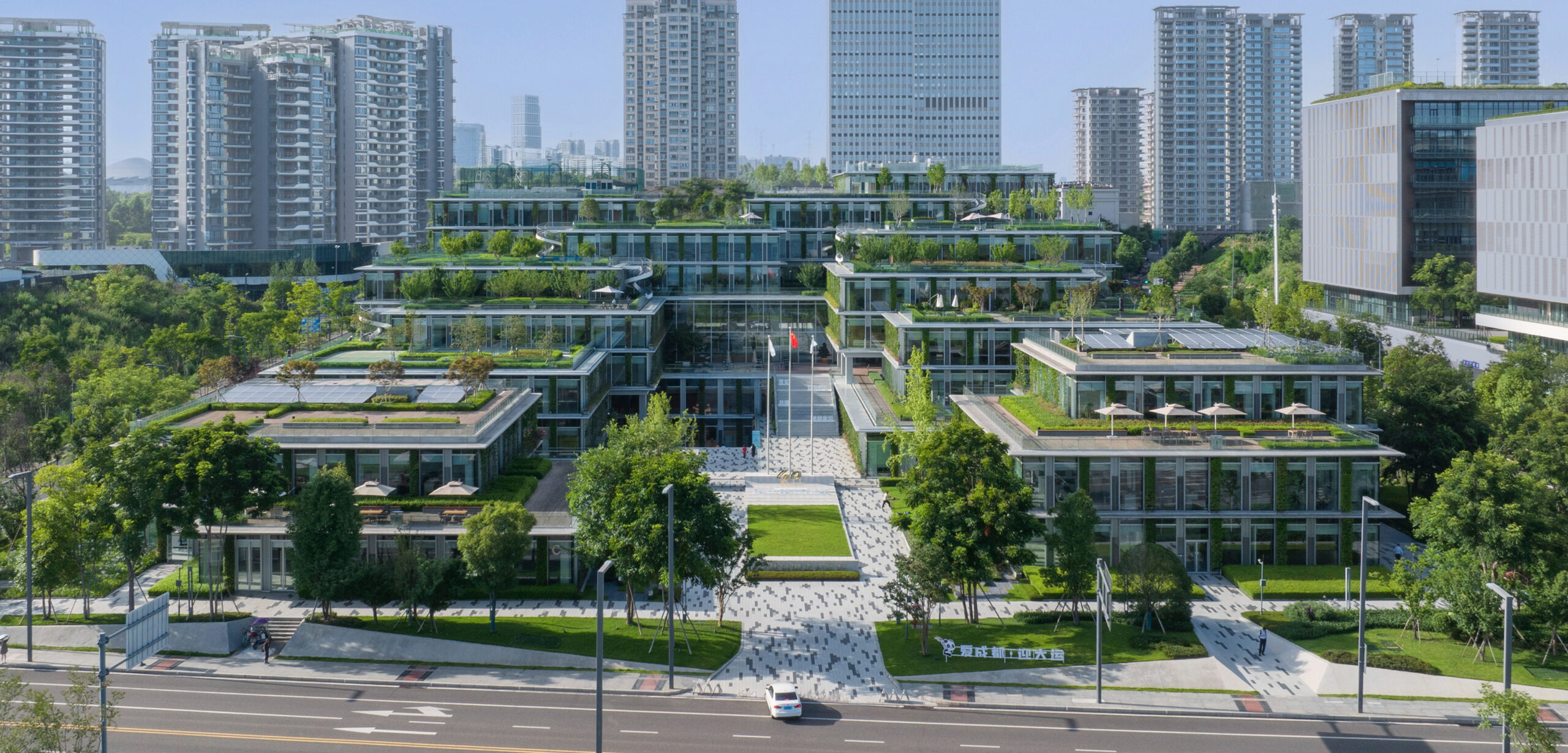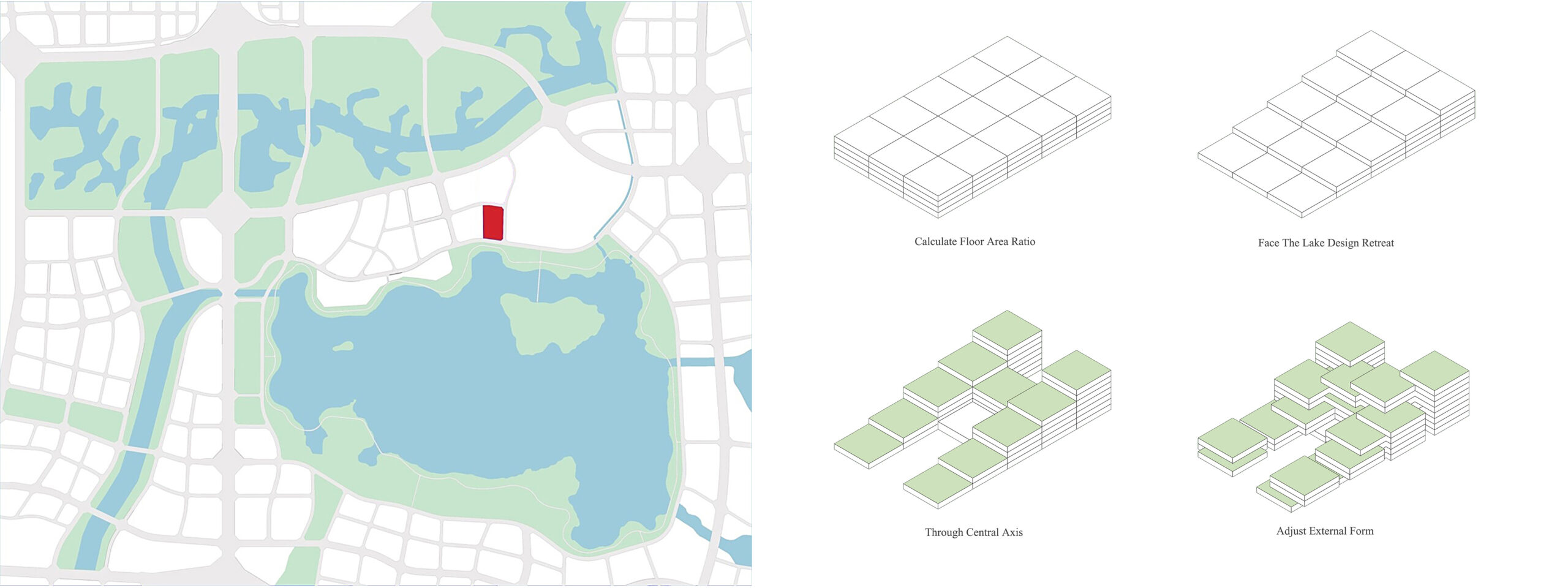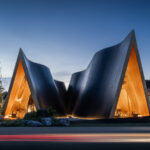The jury and the public have had their say — feast your eyes on the winners of Architizer's 12th Annual A+Awards. Subscribe to our Awards Newsletter to receive future program updates.
In the ever-evolving landscape of modern architecture and construction, the complexity of building projects is escalating, with each decision intricately linked to factors like structural integrity, sustainability, cost efficiency and aesthetic value. This interconnectedness requires strong communication, where choices in materials, design and technology influence the building’s performance, environmental impact and user experience. Interdisciplinary collaboration is essential to ensure that the built environment meets the diverse needs of contemporary society from an aesthetic, functional and regulatory perspective while anticipating future challenges.
The intricate nature of contemporary building projects is driven by several key factors: the growing emphasis on sustainability necessitates careful material selection and building methods to minimize environmental impact; stricter regulatory requirements demand meticulous compliance, ensuring that projects meet all legal and safety standards; additionally, innovative designs must skillfully balance aesthetics with functionality, creating spaces that are not only visually appealing but also highly practical and efficient.

Place des Arts by Moriyama Teshima Architects and Bélanger Salach Architecture, Sudbury, Canada | Jury Winner, 12th Annual A+Awards, Architecture +Teamwork | This joint venture project between two lead design architects required further collaboration with seven contributing organizations of ROCS (Regroupement des organismes culturels de Sudbury), which needs were merged in the final design and coordinated with Greater Sudbury Downtown Revitalization Masterplan.
Building projects are highly interdependent, prompting decisions made by one stakeholder or discipline to potentially influence the work of others. A collaborative approach ensures that the outcome reflects a harmonious synthesis of diverse expertise and perspectives, ultimately contributing to the project’s success in meeting functional, aesthetic, regulatory and sustainability objectives. For instance, choices made by architects regarding design aesthetics and spatial planning can affect structural engineering considerations, construction methods and regulatory compliance requirements; sustainability consultants’ decisions on green building certifications and energy-efficient strategies can influence design elements, construction materials and operational practices throughout the building’s lifecycle; and engineering decisions on structural integrity and sustainability can impact architectural design possibilities and material selections.
This interplay, which spans many disciplines at many levels, highlights the importance of early and continuous collaboration among stakeholders, including architects, designers, engineers, contractors, clients and regulatory bodies. By involving these parties from the project’s inception, there is a shared understanding and alignment of goals, ensuring that decisions are informed by a comprehensive view of all project requirements and constraints. Not only does this interdisciplinary collaboration enhance decision-making efficiency, but it also allows for the integration of diverse perspectives into a cohesive project conception that optimizes functionality and aesthetic appeal while meeting regulatory standards and sustainability goals.
Elevating Design: The Role of BIM in Interdisciplinary Collaboration

6D BIM. | Chart by Fernando.morales.tosar via Wikimedia Commons.
The key is to create an environment where different team members can interact, challenge and inspire each other, leading to innovative and practical solutions. The diverse expertise and perspectives from interdisciplinary collaboration ensure all angles are considered, creating thorough solutions. The success of such collaboration relies on clear communication to achieve shared goals. While this communication is essential, advanced technologies like Building Information Modeling (BIM) enhance it further, improving project design and construction processes.
BIM revolutionizes the design and construction processes in AEC (Architecture, Engineering and Construction) projects by enhancing collaboration and efficiency. BIM allows stakeholders to work from a unified digital model containing comprehensive project information. This digital representation facilitates real-time updates and seamless interdisciplinary communication.
BIM incorporates multiple dimensions, such as 3D for spatial design, 4D for scheduling, 5D for cost management and 6D for sustainability. These dimensions enable stakeholders to visualize complex designs, detect clashes early, simulate construction sequences, and analyze energy performance. By improving accuracy and optimizing decision-making, BIM ultimately leads to cost savings, faster project delivery and enhanced overall quality in construction projects, making it an indispensable tool in the AEC industry.
Green Module: Lakeside Headquarters


Green Module: Lakeside Headquarters by CSWADI, Chengdu, China. | Photo by Arch-Exist (top); site plan and massing diagrams (below).
CSWADI’s Green Module: Lakeside Headquarters in Chengdu, China, showcases excellent interdisciplinary collaboration in AEC projects, boosted by technologies like BIM. This collaborative approach marks the Green Module: Lakeside Headquarters as a landmark in architectural innovation and sustainable urban development.
The Green Module: Lakeside Headquarters showcases a dynamic collaboration between the US and China, setting a new standard for Net Zero Energy Buildings (NZEB) in areas with extreme climates. As the headquarters of a leading design firm, it integrates into its surroundings, reimagining regional architecture through modular spaces. The project achieves a harmonious blend of form, space, and energy efficiency by combining passive strategies, active technologies, and renewable energy with innovative materials. Recognized with the 2022 Active House Award in China, it holds certifications for Net Zero Energy Consumption and Carbon Neutrality.
Building Information Modeling (BIM) and cross-disciplinary collaboration were vital, ensuring comprehensive design considerations and efficient execution. This synergy optimized the integration of advanced materials and systems, such as photovoltaic energy storage direct current flexibility system, natural ventilation and pre-cooling ventilation, triple silver double hollow insulated glass, vertical greening intelligent drip irrigation system, as well as temperature and humidity sub-control technology. BIM’s influence extended through the entire project lifecycle, enhancing project management, elevating design quality, and boosting the efficiency of construction and operations.
From Design to Construction: Harnessing BIM for Smarter Building Projects
Building Information Modeling (BIM) plays a crucial role in modern building projects by promoting teamwork across different disciplines and improving efficiency in the AEC industry. BIM integrates various aspects of project management — from design and scheduling to cost control and sustainability — allowing teams to handle complex building challenges with accuracy and foresight. This technology enhances communication and collaboration, enabling teams to innovate and create smarter, more sustainable buildings that meet strict regulations and societal demands. As the industry advances, BIM continues to drive improvements that enhance project outcomes and contribute to a more resilient built environment.
The jury and the public have had their say — feast your eyes on the winners of Architizer's 12th Annual A+Awards. Subscribe to our Awards Newsletter to receive future program updates.









